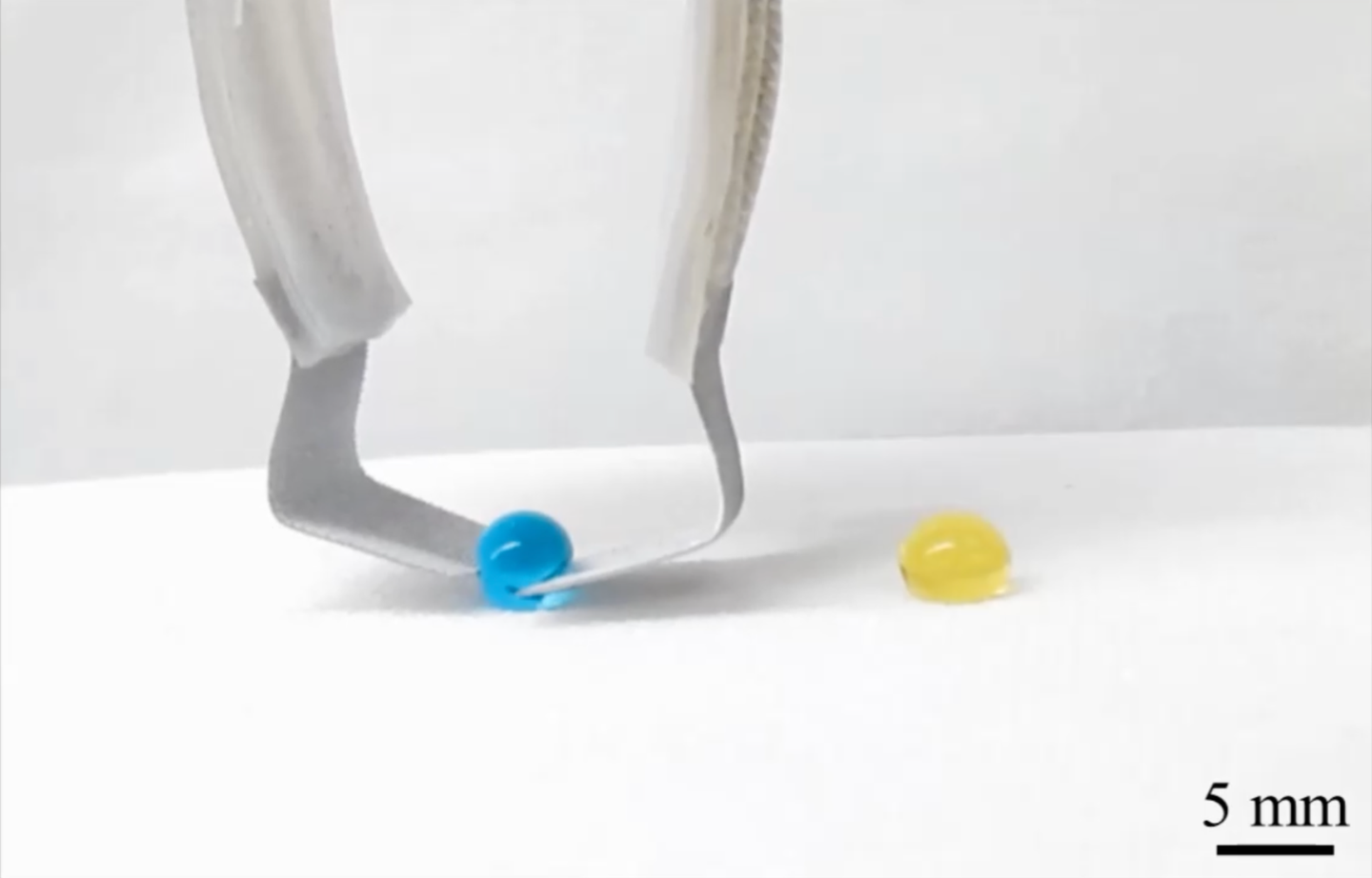This robot’s delicate touch scoops up liquid droplets without causing a splash
Don't be fooled by the new robotic gripper's sensitivity—it's designed to handle the most hazardous materials out there.

Robots are becoming more agile and less clunky by the day, but few look more precise than one recently designed by a group of researchers at Colorado State University (CSU). As explained in a paper published with the Royal Society of Chemistry journal, Materials Horizons, a collaboration between two labs previously working on separate applied technologies has produced small robotic gripper that’s so delicate it can handle individual droplets of liquid.
But don’t be fooled by the tenderness—that careful touch is meant to handle some extremely hazardous materials.
[Related: These robots can build almost anything—including clones of themselves.]
As recently announced by CSU, in combining “soft robotics” with “superomniphobic coatings,” scientists have developed a flexible and lightweight machine whose finger-sized gripper is composed of only a few dollars’ worth of nylon fiber and adhesive tape. Despite the robot’s small size and low cost, the embedded artificial muscle is 100-times stronger than its human counterpoint.
That manipulator is then treated with the aforementioned superomniphobic material, a substance that pretty much does what the name implies, i.e. it resists getting wet from nearly every kind of liquid, even when tilting or moving. As a result, the soft robot can interact with liquid droplets without disturbing their surface tension, thus allowing it to “grasp, transport, and release individual droplets as if they were flexible solids,” per the university. What’s more, the materials and economical design allows each gripper-bot to be completely disposable, thus reducing the chances of human contact even more.
[Related: This agile robot dog uses a video camera in place of senses.]
As one researcher explains in CSU’s write-up, they previously had difficulty attracting attention for their research, a problem that evaporated almost completely after the COVID-19 pandemic’s onset. As such, the new device could soon open up an entirely new way to safely handle toxic, hazardous, or otherwise dangerous liquids without any direct human interference.
“We envision that our biofluid manipulators will not only reduce manual operations and minimize exposure to infectious agents, but also pave the way for developing inexpensive, simple and portable robotic systems, which can allow point-of-care operations, particularly in developing nations,” explains the team’s abstract.
